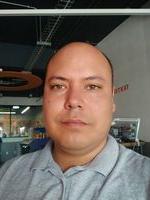

Building a CPR Dummy With Arduino |
Participate and share : Poster
Juan Carlos Gutierrez Zuniga Ilse Monsetrrat Romero Grandvallet Andrea Xalli Macedo Ponce Diana Celeste Delgado Reynoso Ederick Ullrich Llaguno Jacqueline Calderon Valenzuela ROSAURA HURTADO HUERTA
Learn how 12th grade students used design thinking methodology and STEAM skills to create a CPR dummy, programmed with Arduino and built with low-cost materials. The students included the necessary features to learn the correct cardiopulmonary resuscitation procedure, allowing them to implement critical thinking and problem-solving.
| Audience: | Curriculum/district specialists, Teacher education/higher ed faculty, Teachers |
| Skill level: | Beginner |
| Attendee devices: | Devices not needed |
| Topic: | Project-, problem- & challenge-based learning |
| Grade level: | 9-12 |
| Subject area: | Science, STEM/STEAM |
| ISTE Standards: | For Students: Innovative Designer
|
| Additional detail: | Student presentation |
This project expects that teachers can implement active methodologies for learning through the creation of creative and innovative products that serve to solve real problems of society, enhancing in students the interest in science and technology, in addition will allow through their critical thinking to determine the existing needs and propose solutions. The students also develop their logical thinking by programming with arduino that allow them to obtain the tools to obtain excellent results. They used design thinking methodology, STEAM skills together with their creativity to develop an innovative artifact using Arduino, they also investigated what types of low-cost materials could be used to create it, which allowed it to be easily accessible, in addition to solving a real problem in society, To achieve this they relied on their teachers and health professionals (pulmonologist, otolaryngologist, emergency medical technician, and respiratory therapist) to inform them based on their experience what was necessary to have a mannequin that could be really useful, also the students realized that to learn the CPR technique was necessary to create an artifact that would help them to simulate the maneuver so through several prototypes they came to design their own version of the CPR dummy. They also programmed the Arduino card and sensors that allow them to reach the optimal levels of air pressure and chest compression for the maneuver to be effective.
Objectives:
1. The audience will learn about a successful way to implement active methodologies for learning through the creation of creative and innovative products.
2. The audience will learn about a way to awaken students' interest in science through the resolution of real problems.
3. Share with the audience how students develop logical thinking through programming in C++ and Arduino.
4. The audience will know the stages, techniques, materials that the students followed in the class to develop this project.
https://fundaciondelcorazon.com/prevencion/rcp-reanimacion-cardiopulmonar-salvar-vida/tecnicas-de-reanimacion-cardiopulmonar-rcp.html
https://www.designthinking.es/inicio/index.php
https://www.interaction-design.org/literature/article/5-stages-in-the-design-thinking-process
https://www.arduino.cc/en/Guide
Physical Book: 30 proyectos con arduino. Autor: Simón Monk. Editorial: Estribor, 2012.
https://www.youtube.com/watch?v=7ob8CDEmExs
https://www.youtube.com/watch?v=aTn74FyhrXI
https://www.youtube.com/watch?v=LIuf2egMioA
https://naylampmechatronics.com/blog/25_tutorial-trasmisor-de-celda-de-carga-hx711-balanza-digital.html

Computer Engineer, Master in Computer Science, 5 years of experience as a science and technology teacher, Experience in the development of Maker projects applied to solving social problems, passionate about STEAM education and the generation of Maker skills in the students. He is currently a STEAM-makerspace operator in high school.



I have 18 years of teaching experience. Passionate about the education of teenagers, I am amazed to see the thirst for scientific knowledge in boys, I love working with them researching, creating, knowing together the world of science and technological innovations that lead us to know more. President of the Academy of Experimental Sciences (2002 - 2005), UVM Academic Excellence Award (2001 to 2008), 1st, 2nd and 3rd place Advisor of the Bajío UVM Prize in Health Sciences (2003 - 2008). 3rd advisor. Place Anáhuac International Baccalaureate Award (2009) Researchers of the New Millennium.